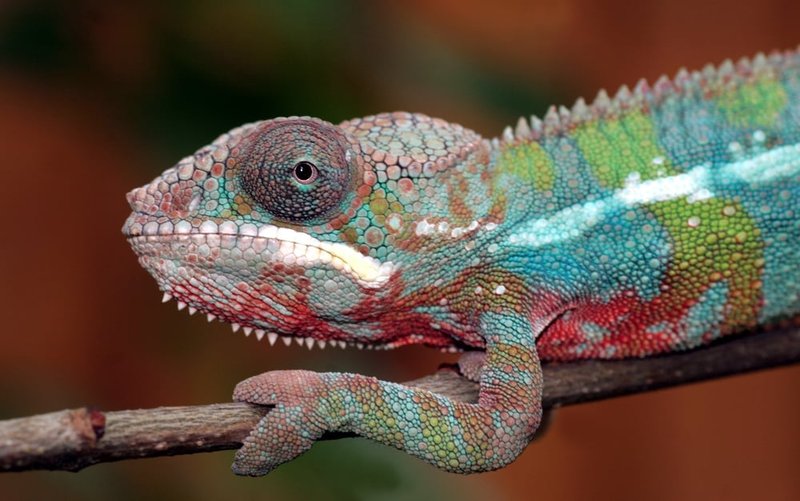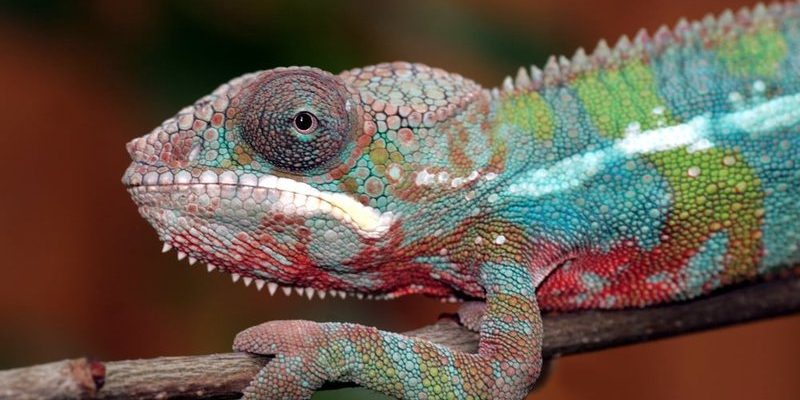
The idea of a creature regrowing a limb can sound like something out of science fiction, right? Imagine if we could just pop off a finger after a minor mishap and watch it grow back like a plant from a cutting! Well, that’s not quite how it works for chameleons. Let’s dive in and explore what happens when a panther chameleon faces injury and whether or not it can bounce back from a physical setback.
Understanding the Anatomy of Panther Chameleons
Before we talk about regeneration, it’s essential to know a bit about what makes up a panther chameleon. These captivating creatures, native to Madagascar, have a unique body structure that contributes to their ability to thrive in various environments.
Panther chameleons have a long, prehensile tail, which is super handy for gripping branches as they navigate the treetops. Their limbs are strong and allow for agile movement, which is crucial for hunting insects.
But here’s the catch: their tails and limbs are not designed for regeneration. Unlike some reptiles, such as certain lizards that can regrow their tails, chameleons don’t have that ability. If a panther chameleon loses its tail or limb due to injury or a predator, it won’t grow back.
What Happens When a Chameleon Loses Its Tail?
If a panther chameleon loses its tail, it’s a bit like losing a vital tool. The tail not only helps with balance but is also essential for their climbing abilities. Imagine trying to ride a bicycle without handlebars. That’s how challenging it can be for a chameleon without its tail!
When they lose their tail, they have to adapt to the new situation. This might mean changing their movement patterns or relying more on their limbs for balance. Despite losing an essential part of their body, panther chameleons are resilient. They learn to navigate the world in a new way, finding comfort and stability through their remaining limbs.
Do Panther Chameleons Regenerate Limbs?
Now let’s tackle the question of limbs. Unlike some amazing amphibians like salamanders, which can regrow limbs, panther chameleons do not share this ability. Once they lose a limb, that’s it. They won’t sprout a new one, no matter how much they might need it.
Think of it this way: if you’ve ever tried to bake a cake but realized you were missing a key ingredient, you can’t just wave a magic wand and expect it to appear. It’s similar for chameleons with their limbs. It’s not just about losing something. It’s about how their bodies are fundamentally designed.
The Impact of Losing Limbs
Losing a limb can significantly affect a panther chameleon’s life. They face more challenges in hunting and escaping from predators. They might need to be more cautious and adjust their hunting strategies accordingly.
Imagine trying to grab a snack with only one hand. You’d have to find alternative ways to reach that delicious treat! Chameleons rely heavily on their limbs for catching insects, so without a limb, they might need to rely on a different approach or simply miss opportunities.
Adaptation and Survival Strategies
So, how do panther chameleons cope with these challenges? It’s all about adaptation. While they can’t regrow limbs or tails, they are excellent at modifying their behavior.
One strategy they employ is staying low and being more cautious. Chameleons are naturally masters of camouflage, using their skin color to blend into their surroundings. This skill becomes even more crucial after an injury. They’re experts at taking advantage of their ability to hide from predators, which helps them survive despite their loss.
Additionally, they may become less active or change their diets. Instead of being the agile hunters they once were, they might focus on catching prey that’s easier to reach.
Why Regeneration Matters in Nature
Regeneration is a fascinating aspect of nature. Many animals, like certain types of lizards or starfish, can regrow limbs or tails, which serves as a survival strategy. It allows them to escape predators or recover from injuries quickly.
For panther chameleons, their inability to regenerate means they have other tools to survive, like their camouflage and adaptability. It’s a reminder that nature doesn’t always give every creature the same gifts, and each species has unique strategies to thrive.
The Role of Environmental Factors
Environmental conditions significantly impact the health and well-being of panther chameleons. Factors such as habitat loss, climate change, and human interference can put them at risk. When they face challenges in their environment, it can lead to more injuries and stress.
For instance, if their trees are cut down or if there’s less food available due to climate issues, they become more vulnerable to accidents and predators. In these situations, not being able to regrow limbs or tails becomes even more critical for their survival.
Chameleons thrive best in lush, green areas where they can easily blend in with their surroundings. Protecting their habitats is essential to ensure that they can continue to live and adapt in the wild.
In summary, panther chameleons are remarkable creatures, but they don’t have the ability to regrow their tails or limbs. Their survival relies on a combination of adaptability, camouflage, and cautious behavior. While it would be incredible to see them regenerate like some other animals can, they have their unique strengths that allow them to thrive despite these limitations.
So, the next time you come across a panther chameleon, remember that beneath their colorful exterior lies a world of adaptation and resilience. They may not have the gift of regeneration, but they certainly have a knack for survival in the wild. Whether it’s their striking colors or their clever survival tactics, there’s a lot to appreciate about these enchanting reptiles.

